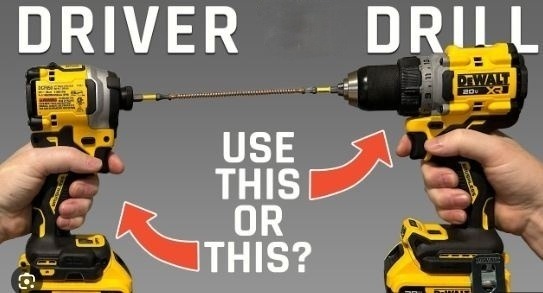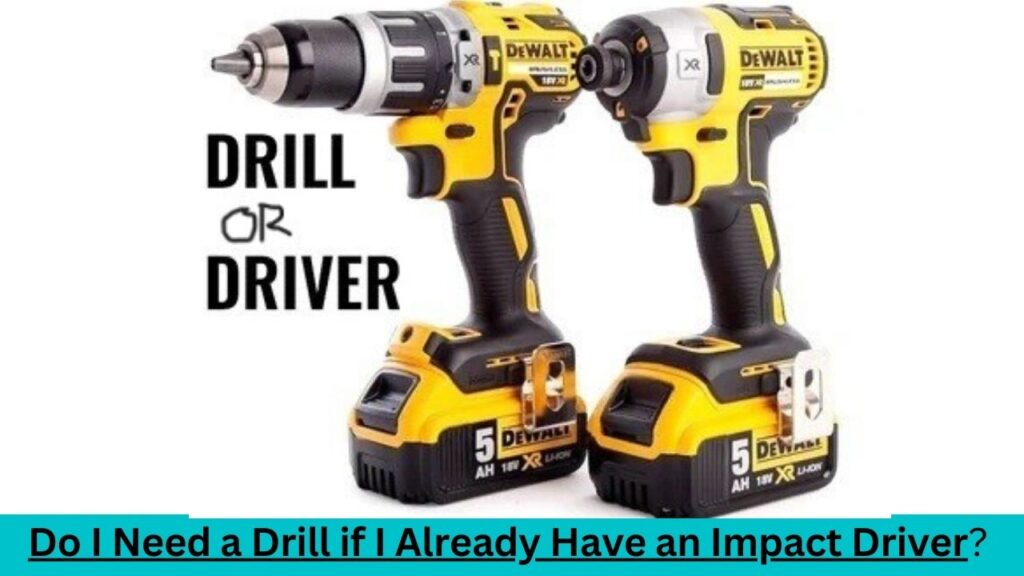In the world of DIY projects and home improvements, having the right tools can make all the difference. Among the essential power tools, the debate often arises: Do I really need a drill if I already have an impact driver? While these two tools may seem similar at first glance, each serves a unique purpose. In this blog post, we’ll look into the characteristics of both tools, explore their individual strengths, and help you decide whether you need a Drill if you already Have an Impact Driver.
Understanding the Basics:

Let’s start by differentiating between a drill and an impact driver. A drill is a versatile tool designed for drilling holes into various materials, and it can also be used for driving screws. On the other hand, an impact driver is specifically engineered for driving screws and other fasteners. It delivers high torque and rotational force, making it particularly effective for tasks involving large or stubborn fasteners.
The Case for the Impact Driver:
If you’re examining whether to invest in a drill when you already have an impact driver, consider the unique advantages an impact driver brings to the table. Impact drivers are exceptionally efficient for tasks such as driving long screws, lag bolts, or any application where high torque is required. Their ability to generate significant rotational force with minimal effort from the user makes them a go-to tool for heavy-duty fastening applications.
When an Impact Driver Isn’t Enough:
While an impact driver excels in high-torque situations, there are scenarios where a traditional drill proves more versatile. Drills are better suited for tasks that involve precision, such as drilling small holes or working with delicate materials. If your project requires a range of bit options beyond standard screwdriver bits – like spade bits, hole saws, or auger bits – a drill becomes indispensable.
Additionally, drills often feature adjustable speed settings, making them ideal for applications that require finesse. Whether you’re assembling furniture, installing cabinets, or working on a woodworking project, the control offered by a drill can be a game-changer.
Finding Harmony in Your Toolkit:
In many cases, having both an impact driver and a drill in your toolkit can provide the perfect synergy for tackling a wide range of projects. While the impact driver dominates heavy-duty fastening tasks, the drill steps in for precision drilling and tasks that demand a lighter touch.
Investing in a quality combo kit that includes both tools not only ensures you have the right tool for every job but also saves you the hassle of switching between bits constantly. The convenience of having both tools readily available may outweigh the cost, especially if you frequently find yourself switching between drilling and driving tasks.
Conclusion:
The need for a drill if you already have an impact driver depends on the type of tasks you undertake. Impact drivers excel at heavy-duty fastening, while drills are better for precision drilling and versatile bit options. If your projects involve a mix of these tasks, having both tools can provide a comprehensive solution. Assess your specific project requirements to determine whether owning both a drill and an impact driver is necessary for your toolkit.
